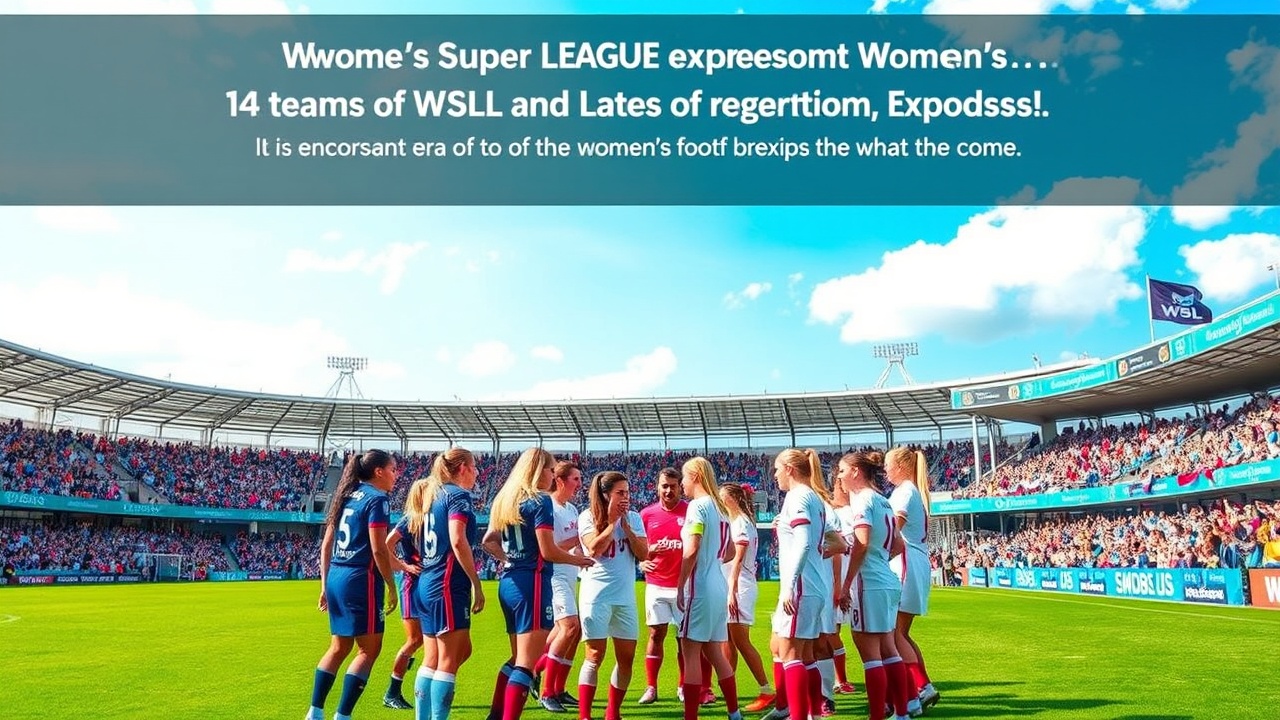Expansion of the English Women’s Super League
On Monday, an important decision was made by club officials to enhance the English Women’s Super League (WSL), increasing its size from 12 to 14 teams while transitioning the Women’s Super League 2 (WSL 2), previously known as the Championship, into a fully professional league. The Football Association (FA) has greenlit these modifications, set to come into play for the 2025-26 season, marking a significant moment for the league as it strives to become a leading force in women’s football on a global scale.
Reasons for Change
The impetus for these changes stems from a determination to bolster competitive balance and ensure financial stability within the first two tiers of women’s football. After evaluating numerous potential structures, including models like the Swiss format seen in the Champions League and concepts such as no relegation and playoff systems, the league ultimately favored a traditional double round-robin arrangement. This will involve each team competing against every other team twice, an approach expected to maintain a high level of play.
This restructuring follows the decline of several clubs, most notably Blackburn Rovers, who had to relinquish their position in the second tier after struggling to meet new financial criteria. The expansion aims to enhance the viability and competitive edge of teams across both tiers while fostering the overall health of the English football hierarchy.
New Promotion and Relegation Systems
For the first time since its inception in 2010, the WSL will welcome two additional teams. The newly established promotion system will allow the top two clubs from WSL 2 to ascend to the WSL at the conclusion of the 2025-26 season. However, the league will also introduce a relegation playoff, where the 12th-placed team in the WSL will face off against the third-placed WSL 2 club to determine if they retain their spot in the top division.
Meanwhile, WSL 2 will remain capped at 12 teams for the time being. This decision is rooted in a belief that rapid expansion could dilute the quality of competition and jeopardize sustainability. From the 2026-27 season, the champions of WSL 2 will secure promotion to the WSL, while winners of each division within the FA Women’s National League (WNL) will also gain entry into the second tier.
Relegation and Financial Stability
Amidst discussions about abolishing relegation—an idea that sparked considerable backlash from supporters—the league confirmed that the relegation process will continue. The team finishing in 14th place in the WSL will automatically drop out, and the 13th place will have to fight to retain their position through playoffs against WSL 2’s second runner up. Additionally, the bottom two teams in WSL 2 will drop to the third tier.
Although the WSL does not govern the lower divisions, there is optimism that by expanding the top leagues and stabilizing WSL 2, this will help nurture teams in the third tier. Clubs aspiring for promotion from the third tier must now demonstrate adherence to professional standards set by the FA, ensuring they are adequately prepared for the demands of a fully professional environment.
Scheduling and Match Volume
The increased team count will introduce more matches within the regular season. However, the league has carefully assessed its scheduling to maintain a three-week winter break and account for FIFA and UEFA international windows. The WSL anticipates requiring 26 matchdays but feels confident that scheduling, with additional midweek fixtures and the continuation of the League Cup format, will be manageable.
In a notable change, for the 2025-26 season, both the WSL and WSL 2 will kick off in the same week, which is six weeks post the conclusion of Euro 2025, unlike previous seasons where they started at different times. The approval for this expansion was unanimous among shareholders, reflecting widespread support stemming from thorough consultations involving players, fans, coaches, and other stakeholders.
Future Goals and Challenges
Addressing disparities in match volumes faced by international players at the top of the league versus their lower-placed, non-international counterparts is also a priority for the league, aiming to create a more equitable playing field moving forward.
The WSL’s expansion is viewed as a leap towards greater competitiveness in women’s football while aiming for financial sustainability. Despite this ambition, concerns remain regarding whether the financial disparities between WSL and WSL 2 clubs can withstand the pressure of an expanded league. Historically, some clubs have struggled to maintain their presence in the WSL after promotion, and the league intends to keep a close eye on the evolving dynamics to ensure that all teams can thrive within their respective tiers.




